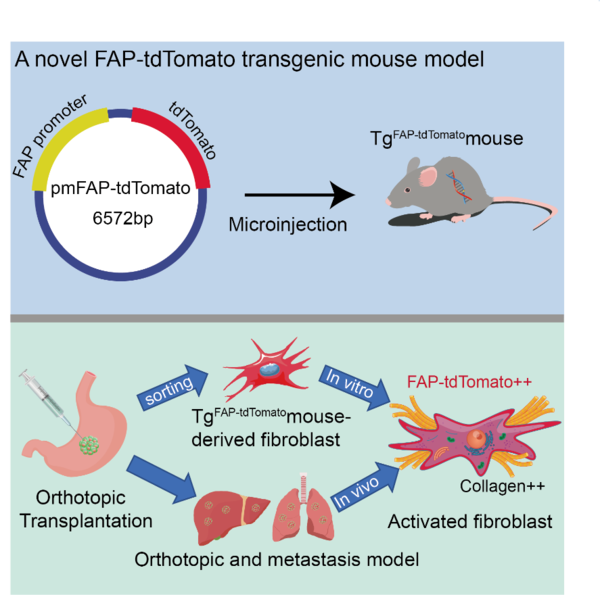- HOME
- News & Events
- Publications
- 【Publications】A novel tdTomato transgenic mouse model to visualize FAP‐positive cancer‐associated fi...
Publications
【Publications】A novel tdTomato transgenic mouse model to visualize FAP‐positive cancer‐associated fibroblasts
February 2 2023
Lab:Takatsugu Ishimoto
Paper information
Tile:
A novel tdTomato transgenic mouse model to visualize FAP‐positive cancer‐associated fibroblasts
Feng Wei, Tomoyuki Uchihara, Atsuko Yonemura, Noriko Yasuda-Yoshihara, Tadahito Yasuda, Takashi Semba, Masahiro Fukuda, Takahiko Akiyama, Fumimasa Kitamura, Luke Bu, Xichen Hu, Lingfeng Fu, Jun Zhang, Ryusho Kariya, Juntaro Yamasaki, Kazuki Aihara, Kohei Yamashita, Osamu Nagano, Seiji Okada, Hideo Baba*, Takatsugu Ishimoto*
(*corresponding authors)
FEBS Journal 2022 doi: 10.1111/febs.16712
Highlights
・We established a novel transgenic mouse which specifically expressed tdTomato along with FAP promoter activity.
・FAP-tdTomato transgenic mouse-derived fibroblasts showed high tdTomato expression after coculturing with mouse gastric cancer cells.
・Orthotopic transplanted tumours also showed FAP-tdTomato expression in fibroblasts of the stomach and each metastatic legion.
・These activated fibroblasts showed the tdTomato and collagen protein high expression simultaneously.
Abstract
Fibroblast activation protein (FAP) generally shows low or undetectable expression in most normal tissues but is highly expressed in fibroblasts in almost all carcinomas. FAP is one of the potential molecules to detect activated fibroblasts and has multiple roles in tumour progression. We generated transgenic mice that specifically expressed tdTomato along with FAP promoter activity. Coculturing a mouse gastric cancer cell line and FAP‐tdTomato transgenic mouse‐derived fibroblasts showed that tdTomato expression was elevated in the cocultured fibroblasts. Moreover, stomach wall transplanted tumours in mice also showed FAP‐tdTomato expression in fibroblasts of the stomach and each metastatic legion. These results indicated that FAP‐tdTomato expression in fibroblasts was elevated by stimulation through the interaction with cancer cells. Functionally, collagen production was increased in FAP/tdTomato‐positive fibroblasts cocultured with mouse cancer cells. These FAP‐tdTomato transgenic mice have the potential to be used to investigate real‐time FAP dynamics and the importance of FAP expression in tumour development.
Representative figure


